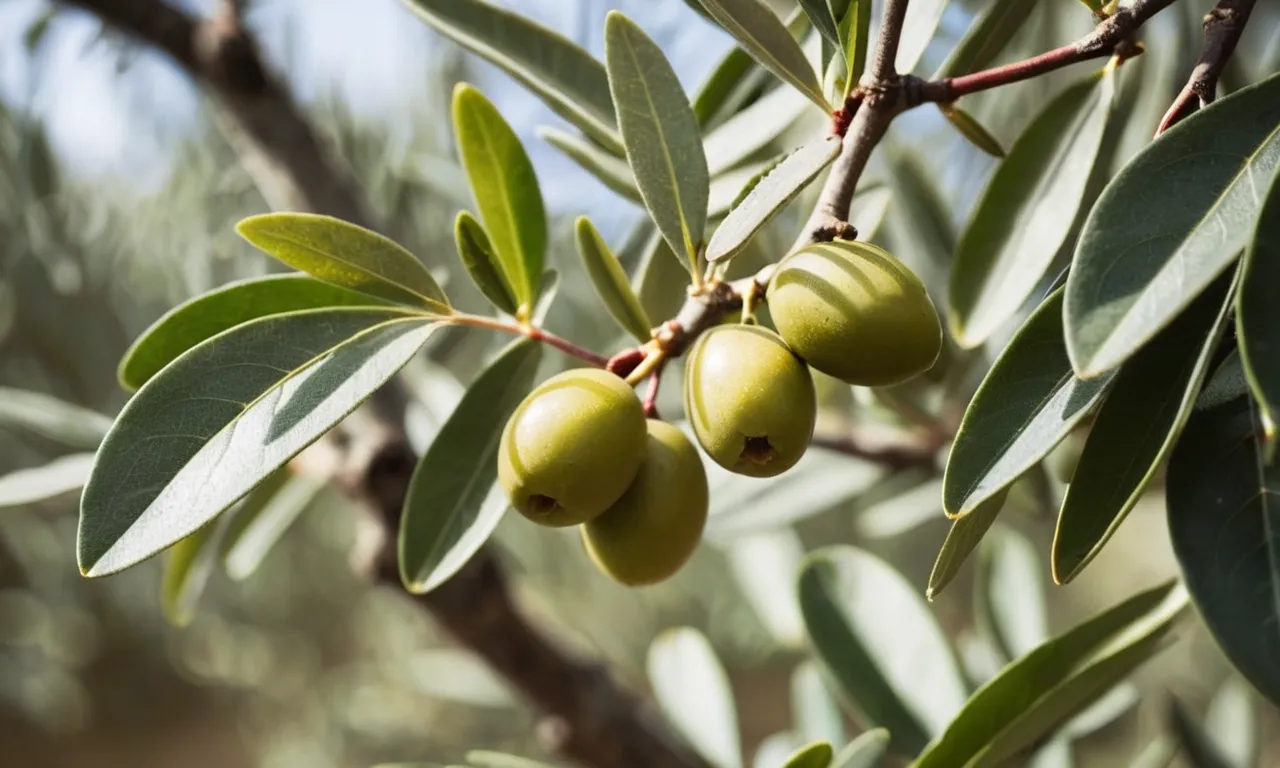What Does The Color Green Mean In The Bible?
The color green is rich with meaning in the Bible. It is associated with life, growth, nature, and restoration. If you’re short on time, here’s a quick answer to your question: Green often symbolizes new life, prosperity, and God’s blessings in the Bible.
In this comprehensive article, we will examine the symbolic meanings behind the color green throughout the Bible. We will look at key passages that mention the color green and analyze how it is used in context.
This article will cover the various meanings and associations of green in the Old Testament and New Testament, from the Garden of Eden to the final pages of Revelation.
Meanings of Green in the Old Testament
Green Represents Life and Vitality
In the Old Testament, the color green is often associated with life and vitality. Green plants and trees represent life and growth, as opposed to the brown deadness of winter. In Genesis 1:30, God grants “every green plant for food” to the animals and humans He created.
The psalms also use green imagery to depict God’s providence: “He makes me lie down in green pastures, he leads me beside still waters” (Psalm 23:2). Green meadows with lush grass illustrate the life-giving abundance that comes from God.
Green Symbolizes Prosperity and Abundance
The color green can also symbolize prosperity, success, and abundance in the Bible. The tribe of Judah, for example, is described as binding “his foal to the vine and his donkey’s colt to the choice vine, he has washed his garments in wine, and his vesture in the blood of grapes.
His eyes are darker than wine, and his teeth whiter than milk” (Genesis 49:11-12). The imagery of dark green vines and ripe grapes illustrates the fertile prosperity of Judah’s tribal land. Similarly, in Job 15:32, a wicked man is warned that “he will be paid in full before his time, and his branch will not be green.”
Here, the greenness of a tree branch represents prosperity, suggesting that the wicked man’s success will be short-lived.
The Greenness of Lebanon
The forests of Lebanon were famous throughout the ancient Near East for their impressive cedars and evergreen trees. The greenery of these forests is mentioned several times in the Bible as a symbol of natural beauty and agricultural bounty.
The cities of Tyre and Sidon, which were supplied with timber from the forests of Lebanon, are praised multiple times for their surrounding greenness and prosperity (Ezekiel 27:6, Zechariah 9:2). Isaiah uses Lebanon as a metaphor for Israel’s eventual redemption: “The wilderness and the dry land shall be glad; the desert shall rejoice and blossom like the crocus…the glory of Lebanon shall be given to it, the majesty of Carmel and Sharon” (Isaiah 35:1-2).
Green Offerings and Decorations
The color green turns up repeatedly in descriptions of religious offerings and tabernacle decorations in the Pentateuch. As part of the Passover celebration, the Israelites were commanded to take “a bunch of hyssop and dip it in the blood that is in the basin” to apply to their doorposts (Exodus 12:22).
This green hyssop branch was used ritually to commemorate God’s salvation. Later, inNumbers 19:6, green hyssop was again used in purification rites. Green threads were woven into the curtains of the tabernacle (Exodus 26:1), and branches from green leafy trees were used in celebrations like the Feast of Tabernacles (Leviticus 23:40).
Overall, the prevalence of green in these ceremonial objects and rituals associates the color with life, growth, purity, and God’s presence.
Green in the New Testament
Jesus’ Green Ministry
In the New Testament, the color green is associated with Jesus’ ministry and the hope found in the gospel. Jesus often taught in green, grassy areas like the Mount of Olives and the Sea of Galilee. His famous Sermon on the Mount was likely delivered on a green, grassy hillside (Matthew 5-7).
Green symbolizes the life and growth that Jesus brings. He said “I am the bread of life” (John 6:35) and called himself the “light of the world” (John 8:12). Through faith in Christ, our lives are renewed and we grow spiritually.
Green Tree and Dry Tree
Jesus used the metaphor of green and dry trees to make a point about faith and spiritual life. “He spoke also this parable: A certain man had a fig tree planted in his vineyard; and he came seeking fruit thereon, and found none.
And he said to the vinedresser, ‘Behold, these three years I come seeking fruit on this fig tree, and find none: cut it down; why does it waste the ground?’ He answering, said to him, ‘Lord, let it alone this year also, till I shall dig around it, and fertilize it: And if it bear fruit, well; and if not, after that you shall cut it down'” (Luke 13:6-9).
Jesus was emphasizing that if something does not bear good fruit, it is useless. Just as green trees full of leaves have the potential for bearing fruit, believers who stay connected to Christ have the potential for spiritual growth and productivity.
The Green Grass of Life
The Bible often uses the green grass as a metaphor for life and prosperity. “He makes me lie down in green pastures. He leads me beside still waters. He restores my soul” (Psalm 23:2-3). Here, David pictures the Lord as a shepherd leading him to lush, green fields and refreshing water, symbolic of spiritual nourishment and renewal.
In contrast, Isaiah prophesies hard times when, “the grass withers, the flower fades” (Isaiah 40:7-8). Green pastures suggest health and vitality, whereas dried grass represents hardship and death.
Green Pastures and Still Waters
The 23rd Psalm contains the line “He leads me beside still waters. He restores my soul.” Here, David paints a tranquil picture of grazing sheep by quiet streams with cool, green grass around them. Just as a good shepherd meets the basic needs of his flock, God promises to provide for and refresh us spiritually.
The green pastures represent nourishment for growth. The still waters suggest peace and rest. This verse is often quoted to bring comfort in turbulent times. God renews us when we read the Bible, pray, worship, and fellowship with other believers.
As we stay connected to the Good Shepherd, he leads us to green pastures and still waters – the spiritual nourishment we need.
Green in Revelation and Biblical Prophecy
Pale Green Horse
In the Book of Revelation, a pale green horse appears alongside the red, black, and white horses of the apocalypse. This pale green horse is ridden by Death and is given authority over a fourth part of the earth to kill with sword, hunger, death, and beasts of the earth (Revelation 6:7-8).
The color green here symbolizes decay, sickness, and death. Throughout the Bible, the color green is associated with new life and resurrection. But in this instance, the pale or sickly shade of green represents corruption and mortality.
Evergreen Trees
Evergreen trees like pine, spruce, and fir are mentioned frequently in the Bible. They symbolize strength, provision, and eternal life. The prophet Hosea refers to evergreen trees flourishing through God’s grace (Hosea 14:8).
Isaiah uses the metaphor of evergreen trees instead of thorns to describe the blessed restoration of creation (Isaiah 55:13). Ecclesiastes highlights how evergreen trees continue thriving even in old age while humans’ strength fades (Ecclesiastes 12:5).
So evergreens represent vitality, fruitfulness, and God’s sustaining power.
The Leaves of the Tree of Life
The tree of life first appears in Genesis and yields fruit that gives immortality (Genesis 2:9, 3:22). In Revelation, the tree of life reappears in the New Jerusalem, yielding twelve fruits and leaves for the healing of the nations (Revelation 22:2).
The specific mention of the leaves suggests continual health and restoration. Several Bible scholars believe the leaves refer to the Word of God which heals, renews, and sustains God’s people [1]. The green leaves represent the life-giving power of God’s truth and the eternal life found in Christ.
Conclusion
Throughout Scripture, the color green takes on rich symbolism and meaning. It is closely tied to life, growth, prosperity, and restoration. Many key biblical events and prophecies reference the color green and its vivid imagery.
As we have seen, green runs like a thread through both the Old and New Testaments, from Genesis to Revelation.
The next time you come across the word “green” in the Bible, consider how it adds depth to the passage. Green often indicates the presence of God, His divine blessings, and the eternal life He promises.
With its varied and vibrant symbolic meanings, it is no wonder green is a central color in God’s living Word.








